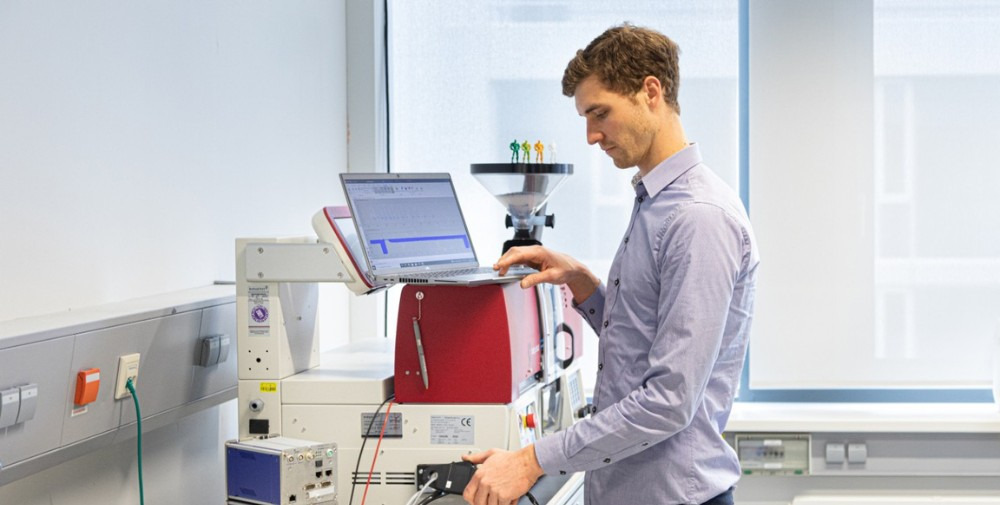November 14, 2023 Highly efficient and energy-flexible – manufacturer-independent and standardized: Together with 39 renowned partners, Fraunhofer IPA has developed a system concept that enables the introduction of DC grids in factories.
Categories
November 14, 2023 Highly efficient and energy-flexible – manufacturer-independent and standardized: Together with 39 renowned partners, Fraunhofer IPA has developed a system concept that enables the introduction of DC grids in factories.

Categories
Tags
Contact info
Silicon Saxony
Marketing, Kommunikation und Öffentlichkeitsarbeit
Manfred-von-Ardenne-Ring 20 F
Fax: +49 351 8925 889
Contact person:
In a factory, many machines have a direct current (DC) intermediate circuit. However, the grid supplies alternating current (AC for short), which means that many drives need a rectifier. Why not operate the entire fleet of appliances with direct current from the outset using a central rectifier? This saves energy and resources. This idea gave rise to the DC-INDUSTRIE and DC-INDUSTRIE2 research projects, in which 39 companies and institutes took part.
The result: a DC system concept was developed as part of the projects, paving the way for standardization. A common language between component manufacturers, industrial grid operators and service providers should facilitate the implementation of DC grids in factories. The first successful industrial projects underline the maturity of this technology and its tangible benefits for industry.
Efficient with DC grids
The DC factory has many advantages. Above all, it helps to save energy: Eight to twelve percent can be saved on infrastructure such as ventilation or lighting, up to 15 percent on production robots and even up to 20 percent on logistics systems. In addition, losses due to reactive power and the usually oversized rectifiers of the individual machine tools are eliminated. Braking energy from machines, which was previously wasted, can be fed into the DC grid. One phase of the cables is eliminated, which saves copper. And last but not least, photovoltaic systems, which are part of a modern factory, can be integrated efficiently. This is because the green energy that flows from the solar cells is also direct current.
Direct current grid and intelligent grid management stabilize production
With the increasing use of renewable energies, the public AC grid is increasingly experiencing voltage dips and short-term power outages. The DC grid offers a solution by bridging these short-term disruptions and making production more stable through a common grid connection point. However, the use of direct current requires precise control of voltage and current by the operator. The Fraunhofer Institute for Manufacturing Engineering and Automation IPA has made a significant contribution to this by developing the concept and design of the grid management system. It enables decentralized and flexible control of loads and storage systems in order to reduce peak loads. These measures not only help to reduce energy costs, but also minimize installation costs.
Simulation model supports grid management
IPA expert Isabella Bianchini and her team have developed a simulation model that maps the entire factory with its power sources and consumers. It can be used to run through all possible scenarios. Above all, it should show that even extreme cases can be mastered by grid management. Pulse-like changes, such as those caused by a short circuit or the rapid shutdown of a machine, are critical. The simulation model can be easily adapted for any factory and enables the operator to better coordinate energy consumption and production.
Also profitable for existing production halls
If energy storage systems can be integrated into existing production halls and kinetic energy can be recovered, it is worth carrying out an analysis of the potential for converting from alternating to direct current. As part of this project, Fraunhofer IPA has developed and extensively tested a method that enables existing machines to be converted to DC operation.
The system concept developed for the introduction of DC networks in industrial plants is just the beginning. It is being further developed and promoted globally under the leadership of the Open DC Alliance (ODCA). The plans include the expansion to other countries and sectors, including private households and retail. Work is also continuing on norms and standards to support the widespread implementation of this technology.
Specifications:
👉 www.ipa.fraunhofer.de
👉 https://dc-industrie.zvei.org/publikationen/systemkonzept-fuer-dc-industrie2
👉 www.ipa.fraunhofer.de/de/referenzprojekte/DC-INDUSTRIE.html